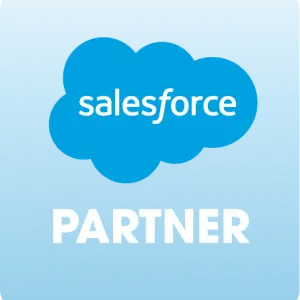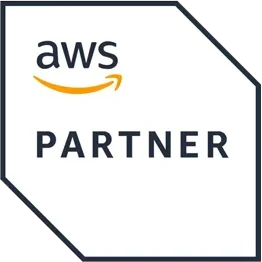Pirates of old used ships to attack their victims. Modern-day software piracy is no less disturbing, but these days, the pirates wreak their havoc not on the high seas, but from the comfort of their own homes and offices.
Some software pirates are small-time criminals who install single-user licenses on multiple computers or carry out other small illegal acts they might not even consider to be software piracy. Others are big-time offenders who copy and distribute software illegally.
But in a world where people don't always think of pirating software as a "real" crime, companies have an uphill battle in making sure they have the right software copy protection methods in place.
Why Do You Need Software Copy Protection?
The overwhelming reason software copy protection is so important is that it's the only way to ensure companies receive proper and fair payment for every copy of their software. Through software security and licensing enforcement, software license protection technology provides software publishers control and visibility into how their applications are deployed and used.
Putting the proper software copy protection methods in place makes sure people cannot use unlicensed copies of software. Applying the optimal software license copy protection technology also means third parties cannot steal a company’s product to resell or even reverse engineer it.
What might be less obvious (but no less important) is that software copy protection is necessary for the good of a company's reputation.
There are few words that make a computer user more anxious than the dreaded utterance "malware."
If a company's software causes a malware attack, the damage to its reputation - and bottom line- could be immense. No one wants to risk using software that carries the risk of viruses or bugs.
With the proper anti-copy software protection in place, this should not happen. If a company or user installs (knowingly or not) a piece of software that comes from a less-than-reputable source and without a license, the business who developed the product is still responsible.
Even if that software was bought without a license.
There's no getting away from it and although it might seem unfair, it’s the cost of doing business. That's why the best thing you can do to protect your product and your reputation is to make sure you have proper anti-copy protection software in place before going to market.
Key Benefits of Security Dongles
So, how does copy protection work? There are various ways of ensuring a company has the right software copy protection methods in place (see below for more details), but one popular method of ensuring software copy protection is by using a security dongle.
These items, similar to USB keys, are hardware-based software protection keys.
While they might seem to be a throwback in a digital world, they have several key benefits that make them a strong choice for ensuring unbeatable software copy protection.
Dongles are low cost, they don't require an internet connection and they do not incur a recurring licensing fee.
But that’s not where their advantages end. Unlike software that is installed on a specific computer, software protection keys such as the Sentinel HL (formerly the Sentinel HASP), are portable. This means this type of software license protection technology can be used on any PC on which the dongle is connected.
Security dongles also offer the strongest enforcement for license terms. With the Sentinel HL key, for example, these terms are securely stored and protected inside the key.
During runtime, the protected software sends encrypted strings to the software copy protection key, which decrypts the strings and produces a response that cannot be imitated.
If the response from the protection key is correct, the application will run. If the software protection key is absent or the response from the key is incorrect, it will not run.
Sentinel Software Copy Protection Solutions
Sentinel also offers a range of innovative software licensing products and software copy protection solutions that enable software and technology vendors to increase software revenue and reduce operating costs.
With hardware-based protection, software-based security or a combination of the two, Sentinel offers something to fit each company's individual software copy protection needs.
In addition to the benefits already mentioned, Sentinel HL keys maintain full backwards compatibility with the existing Sentinel HASP HL, Hardlock and Sentinel SuperPro implementations. It also allows users to take full advantage of forward compatibility with Sentinel’s next-generation software licensing solution – Sentinel LDK.
These solutions are also future proof. Using the unique UpdateOnChip™ mechanism, future functionality and enhancements can be added to in-the-field deployed keys.
All Sentinel HL hardware-based software copy protection keys use a highly secure SmartCard chip providing the utmost security against malicious hardware attacks. This means they are virtually tamper-proof.
For companies that prefer a software-based approach for their software copy protection, the Sentinel SL is a virtual protection key that is installed and stored on the end user's device.
Sentinel HASP SL is based on the Sentinel HASP HL software license protection technology and provides the strongest software-based security available. Sentinel HASP SL protects software copyrights and Intellectual Property and offers a variety of flexible licensing options while enabling Electronic Software Distribution (ESD) to reduce time to market and operational costs.
Finally, Sentinel LDK incorporates both a software and hardware solution to anti-copy protection software. With its unique Cross-Locking technology, it is the only software copy protection solution on the market to offer both hardware-based (USB dongles) and software-based protection, and secure software licensing in a single solution with one set of tools. Sentinel LDK features a variety of hardware and software-based protection keys that enable vendors to choose the right software security level based on their individual business needs.
The Bottom Line
Whether you opt for a hardware-based or software-based solution as your copyright protection force for anti-piracy, enforcement of licensing terms and conditions provides vendors protection from unauthorized use or distribution of their products. Besides reducing the risk of software piracy, software security also offers a variety of license models to flexibly price and package products creating new revenue opportunities and enhancing customer satisfaction.





